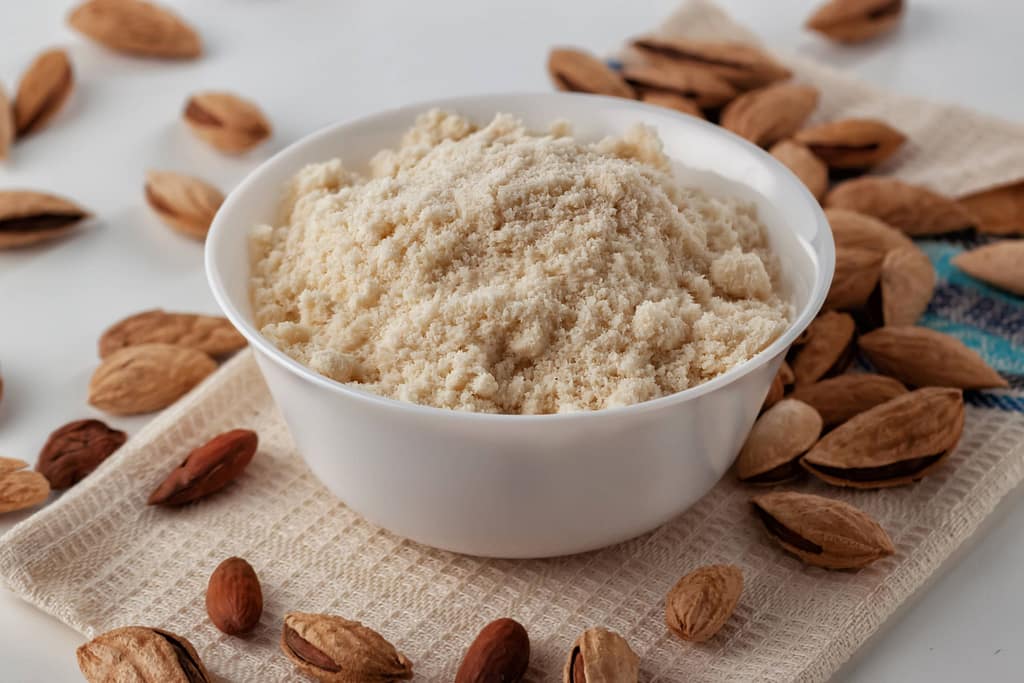Traditional wheat flour has been long used by bakers as the quintessential agent for desserts and pizzas alike. It is cheap, reliable, easy to make, and made from multiple wheat varieties. Indeed, it should be commonplace to have AP flour in your kitchen.
But what about other flour types, specifically almond flour? Alternative flours made from non-wheat based foods such as almonds, coconuts, and cassava possess various properties and benefits over generic flour.

Why Choose Almond Flour?
To start off, almond flour in particular has numerous health benefits that distinguish it from AP flour. This flour is gluten-free, so as long as you do not have a nut allergy, it can be very helpful for your gut. Additionally, it is low in carbs and high in healthy fats and fiber. It also contains more protein than most other flour types. This helps you stay satisfied with your meals for longer and can make weight loss easier. On top of being much less starchy, I believe that almond flour is a much healthier option than AP flour.
So how do you create this unique flour from scratch? First, you take any kind of almonds and put a bunch of them in boiling water. Doing this blanches the almonds and removes the skin. Then you use a grinder and sifter to cut them into a fine powder. The amount of almonds required to make a pound of flour is high, which results in this special flour being slightly more expensive than other flour types. However, due to it being a healthier alternative to AP flour while sporting the same uses, it is definitely worth the cost. It is one of the few flours that is frequently used in gluten-free and paleo-style baking. As for the taste and texture, making flour with almonds or other nuts allows recipes made with them to taste nuttier and chewier.
Recipes you can make with almond flour
- Pancakes. If you’re a heavy pancake fanatic like I am, almond flour pancakes are much safer on your belly, so you can eat more of them. The flour gives your pancakes a more nutty and chewy taste, especially when made from scratch.
- Brownies. Replacing AP flour for almond flour makes the brownies more fudgy and moist.
- Macarons. With just sugar, almond flour, and egg whites, you can create this popular French cookie easily.
- Pasta. Almond flour is very important in pastas that are either gluten-free or protein enriched. It does take some time to get used to the flavor of this kind of cooked pasta, though. I would recommend using marinara or Bolognese sauce as they will always be reliable additions. Vodka and alfredo are also decent sauces to use.
- Almond cake. Cakes made with almond flour are very satisfying-they have a soft and fluffy texture. It also has the advantage of being sturdy, so you can choose to make a double layer as well. You can always choose to use baking powder to puff it up even more, although it is not required. I like to have almond cakes topped off with whipped cream, sliced almonds and fruit for an aesthetically pleasing look.

Additional recipes can be found here.
Takeaways
Almond flour is a viable alternative to traditional flour with a moderately higher price tag. It is healthier than AP flour because it is gluten-free, fiber-enriched, and has more protein. Additionally, it is easy to create at home, assuming you have the necessary number of almonds required to make a good volume. Foods baked and cooked with this flour have a unique texture and are guaranteed to be safer on your gut. Overall, You should never underestimate almond flour when choosing a great base for your baked creations.





